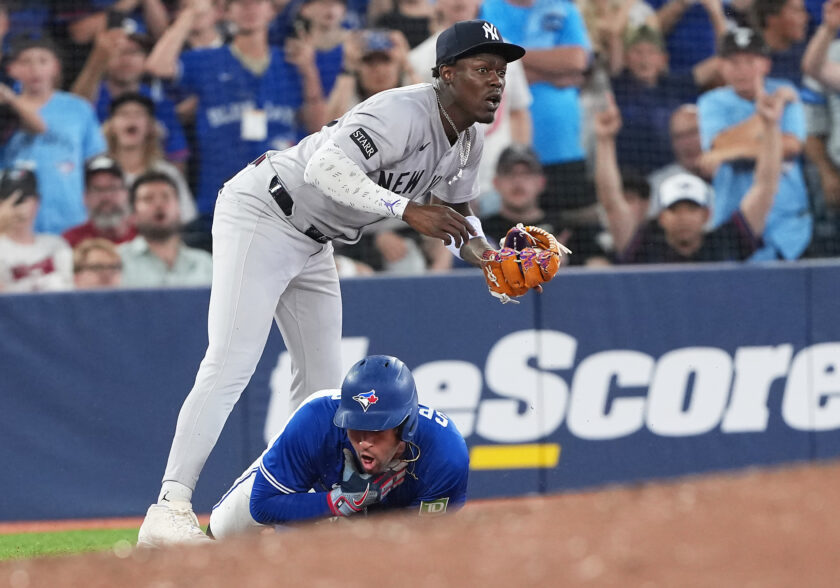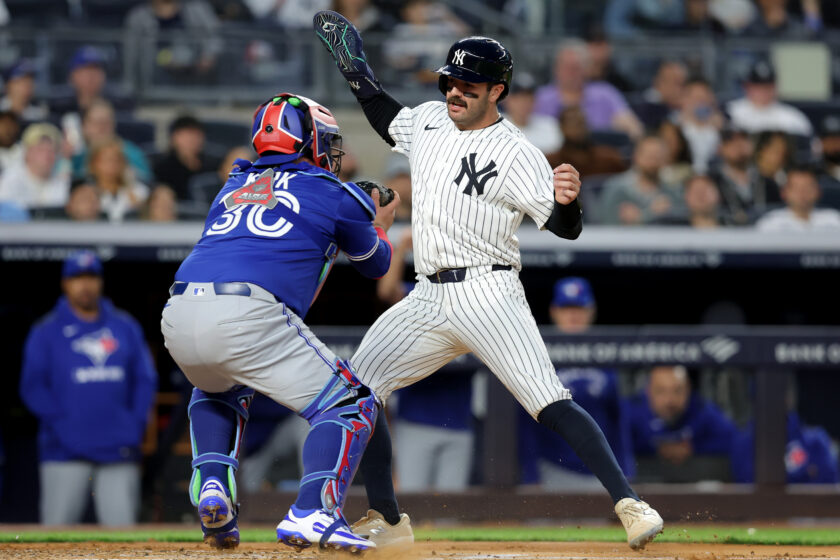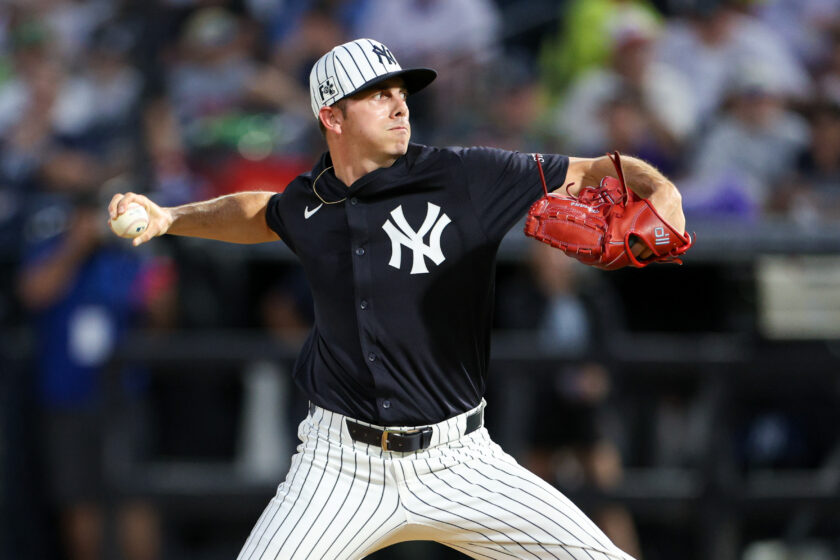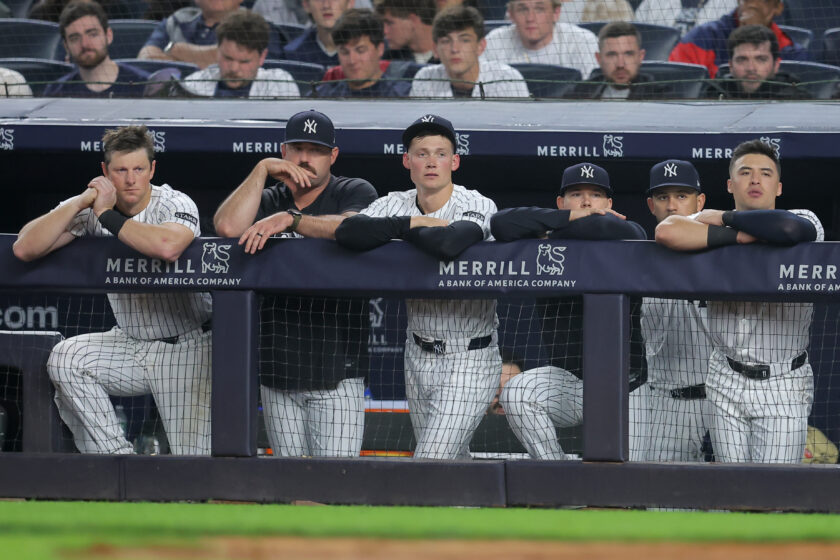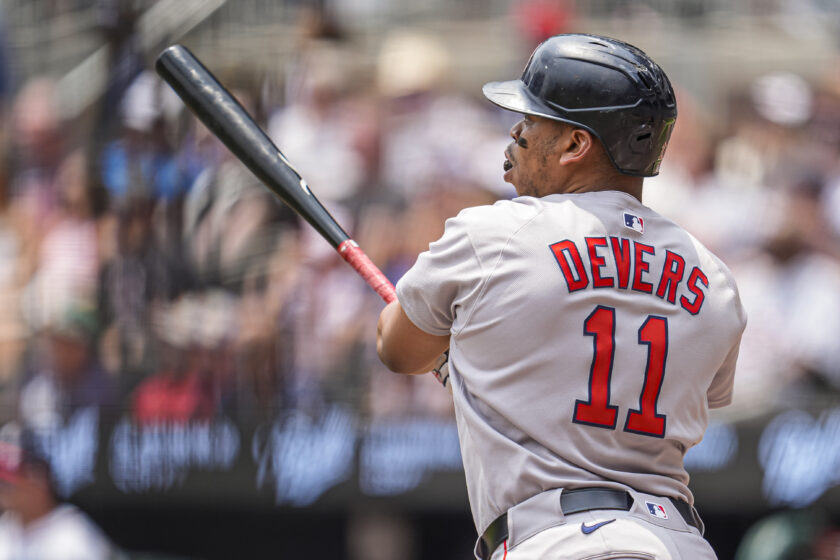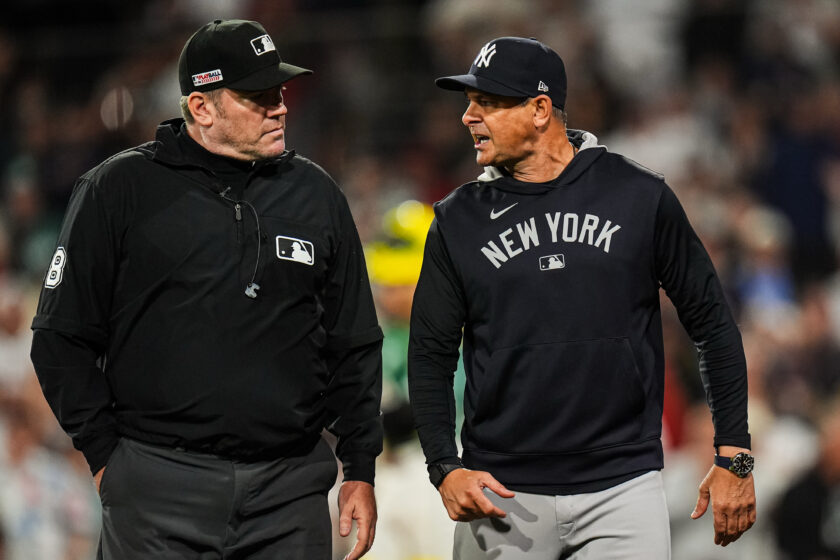New York Yankees: 5 shortstops you forgot existed
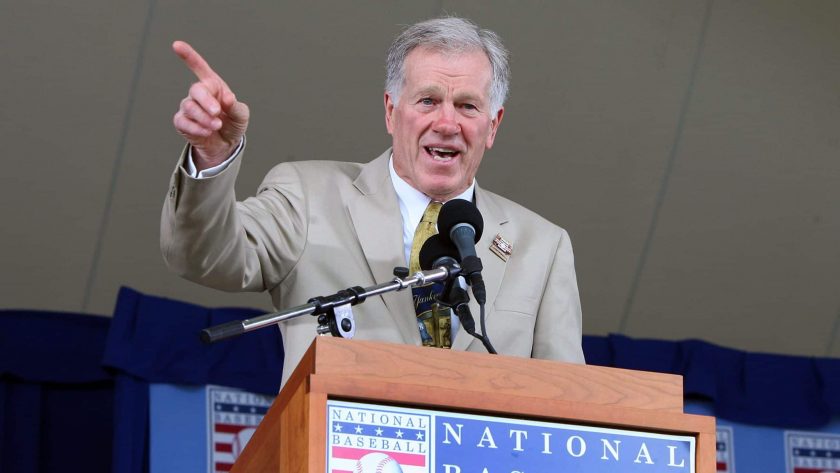
Derek Jeter rules the roost, but these five New York Yankees shortstops did fine jobs before the Captain’s arrival.
[sc name=”josh-benjamin-banner” ]It isn’t easy being a shortstop for the New York Yankees.
It’s because Derek Jeter set the bar so high. The former Yankee captain not only won five World Series rings in a 20-year career but was also a .310 lifetime hitter. Jeter is also the only Yankee to ever reach the 3,000 hit milestone. In a nutshell, teaching impulse control to Peter Griffin and Homer Simpson might be easier than matching Jeter’s accomplishments as a Yankee.
Except, New York Yankees’ shortstop history doesn’t start and stop with Jeter. Keep in mind, he debuted in 1995 and didn’t become a regular starter until the following year. This means over 90 years’ worth of shortstops occupied the position and won 22 World Series rings before him.
Granted, none of these men matched Jeter’s production. They didn’t have the same inside-out swing, not to mention the same impact on the game. Some, namely Bucky Dent, are only known for one signature moment in otherwise lengthy careers.
Some fans may have forgotten them, but this writer hasn’t. As baseball inches closer to a return, let’s look at five New York Yankees shortstop who could use some extra attention.
No. 5: Bobby Meacham (Yankees tenure: 1983-1988)

Bobby Meacham is probably better known for a grave mistake he made on the field. In 1985, a miscommunication between him and teammate Dale Berra resulted in the popular highlight above. On Rickey Henderson’s fly ball to center, Meacham waited to tag up in case the ball was caught. It wasn’t, he and Berra were right on top of each other on the basepaths, and both men were tagged out at home by Hall of Famer Carlton Fisk.
Except, that’s just one piece of Meacham’s New York Yankees story. The St. Louis Cardinals traded him to New York in the winter of 1982, and Meacham spent his entire career in pinstripes. Injuries kept him in and out of the lineup, and he was a subpar defensive infielder who hit just .236 for his career.
But for a brief two-year stretch, Meacham became a prime small-ball hitter. He led the American League with 14 sacrifice hits in 1984 and led the majors with 23 the following year. 1984 was also the sole season in which Meacham appeared in more than 100 games. In the 1988 offseason, frustrated with his injuries and inconsistency, the Yankees traded him to the Texas Rangers. Meacham never played in the majors again.
However, Meacham stayed in the game by going into coaching. He even returned to the Yankees in 2008 as manager Joe Girardi’s third-base coach and currently serves on Girardi’s staff with the Philadelphia Phillies. He was never a prominent Yankee, but die-hard fans should remember Bobby Meacham in some capacity.
No. 4: Mark Koenig (Yankees tenure: 1925-1930)
Mark Koenig and Derek Jeter have two things in common: they were both New York Yankees shortstops on World Series-winning teams and both wore No. 2 on their backs.
And though Koenig didn’t come close to matching the Captain’s numbers in a brief New York career, he still held his own. Koenig hit .500 in the 1927 World Series and .319 in the 1928 regular season. As a Yankee, he hit a respectable .285 compared to a lifetime mark of .279.
Defensively, Koenig left a lot to be desired. He made 192 errors in five-plus years as the Yankees’ shortstop. In Game 7 of the 1926 World Series, his crucial error let the St. Louis Cardinals score the go-ahead and ultimately game-winning run. In May 1930, he and pitcher Waite Hoyt were traded to the Detroit Tigers.
But for all his faults, Koenig did what was required of a shortstop in his era. He had strong enough range despite his errors and was also a decent contact hitter. Oh, and he was also the man on base when Babe Ruth hit his record 60th home run of the season in 1927.
No. 3: Roger Peckinpaugh (Yankees tenure: 1913-1921)
Roger Peckinpaugh just missed out on the New York Yankees breakout. The Cleveland Naps traded him to the team in May 1913, and it wasn’t until his final season that the Yankees made the World Series. They lost to John McGraw’s superior New York Giants, and Peckinpaugh was traded to the Boston Red Sox that winter.
But even on mostly bad teams, Peckinpaugh left his mark. Despite committing 360 errors as a Yankee, he was actually a decent defensive shortstop compared to the rest of the league. Though only a .257 hitter in New York, his 143 stolen bases rank 18th in team history.
The good news is Peckinpaugh’s career didn’t suddenly peter out after leaving the Yankees. Quite the opposite, in fact. Days after he was traded to Boston, the Red Sox shipped him to the Washington Senators. There, he played a key role and helped the team win the 1924 World Series, hitting .417 in the Fall Classic. In 1925, Peckinpaugh was named AL MVP.
Roger Peckinpaugh didn’t do much as a Yankee, but he certainly accomplished enough to warrant a spot on this list.
No. 2: Gene “Stick” Michael (Yankees tenure: 1968-1974)

Gene Michael came to the Yankees after the New York Yankees purchased his contract from the Los Angeles Dodgers in the 1967 offseason. Nicknamed “Stick” for being a skinny 6-foot-2, 183 pounds, he spent the rest of his career entrenched at shortstop.
Unfortunately for Michael, he donned the pinstripes right as the Yankees were rebuilding. He also couldn’t hit a lick. Of his 15 career home runs, 12 were hit when he was with New York. Michael also hit a meager .233 as a Yankee and was an overall average fielder.
But Whatever Michael lacked on the field, he made up for in retirement. He returned to the Yankees as a coach in 1979 and served as the team’s manager for two separate stints in 1981 and 1982. Michael also managed the Chicago Cubs for two years. He then rejoined the Yankees in the front office, and the rest is history.
Promoted to general manager in 1991, Michael rebuilt a barren farm system, made some trades, and signed key free agents to form what fans now know as the Core Four. Headlined by Jeter, this group made the Yankees a dynasty again and took home five World Series rings.
Without Michael’s front office prowess, the dynasty of the 1990s otherwise might not have happened.
No. 1: Tony Kubek (Yankees tenure: 1957-1965)
Most fans probably know Tony Kubek best as a broadcaster rather than his playing days. After retiring in 1965, he spent 24 years as a color analyst for NBC. Kubek also spent 13 years doing commentary for Toronto Blue Jays broadcasts and later did the same for the Yankees on the MSG Network. Kubek then retired in 1994 and received the Ford C. Frick Award from the Hall of Fame in 2009.
But before Kubek won our hearts in the broadcast booth, he won fans’ hearts as the shortstop for the New York Yankees. He hit .297 in 1957 as a sort of super-utility player before settling in at short. Kubek was also a fine defensive shortstop who formed a key double-play tandem with second baseman Bobby Richardson.
All in all, Kubek would finish his all-too-brief career with three World Series rings and four All-Star selections. A back injury forced his retirement at just 29 years old in 1965, and the Yankees’ dominance of the last decade officially collapsed.
Just the same, for all the great things he did both as a Yankee and a Hall of Fame broadcaster, Kubek deserves more recognition than he gets.
Josh Benjamin has been a staff writer at ESNY since 2018. He has had opinions about everything, especially the Yankees and Knicks. He co-hosts the “Bleacher Creatures” podcast and is always looking for new pieces of sports history to uncover, usually with a Yankee Tavern chicken parm sub in hand.

